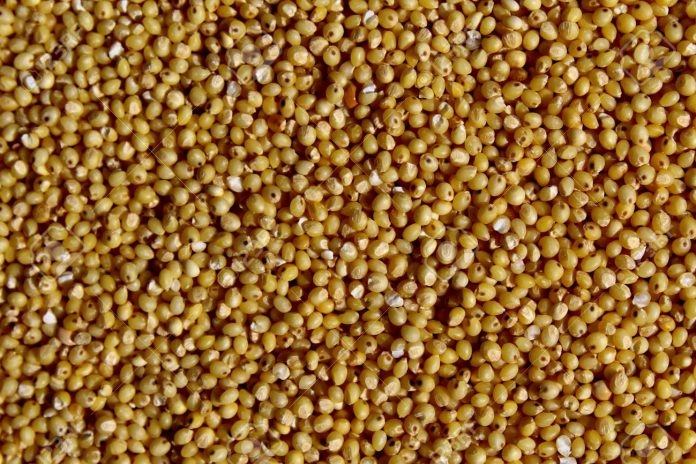Tawanda Marwizi
Clive Mutengo looks dejected as he tries to come to terms with his wilting maize crop in Mbire-Mashonaland Central province.
After investing a fortune in the farming business with hope that he would harvest a life changing yield, the state of the crops invited tears to flow uncontrollably as he looked at a lifeless maize field.
Even the ground nuts are wilting and his only hope is on livestock. But even then, the animals are showing signs of stress. His concern is that his family will yet again go hungry after a second consecutive drought hit the region.
To avert full blown hunger in communities, Zimbabwe Resilience Building Fund, a non-governmental organization involved in community empowerment projects has embarked on community resilience programme educating people about small scale grains.
Sorghum and millet are ranked the second staple cereal crop after maize (UNDP, 2018) in Zimbabwe and support millions of people (Rohrbach, 1999).
Production in general and availability of surpluses in particular is very low among smallholder farmers.
Building resilience in communities helps vulnerable rural communities to withstand natural disasters like hunger and improve the welfare of people.
Despite their potential, sorghum and millet remain the most under-utilised and under-developed cereal grains compared to wheat, rice and maize. The bulk of the sorghum and millet is processed by traditional methods and products are used at household and cottage levels to make stiff, soft porridge and alcoholic beverages with perceived low quality and low value.
Most people in drought prone communities have undermined the potential of small grains to turn their fortunes at the time the country has been affected by climate change.
On Wednesday ZRBF hosted a discussion that saw several players including Ministry of Lands, Agriculture, Water and Rural Resettlement, Ministry of Finance, Private sector actors working with small grains and farmers.
During the discussion players agreed to commercialise small grains as one aspect that can foster community resilience.
Deputy Minister of Lands, Agriculture, Water and Rural Resettlement Vangelis Haritatos said government was committed in revitalising industrial utilisation of traditional grains as well as addressing food security in the face of drought.
“Production costs of traditional grains are lower and these crops are resilient to droughts. Markets for traditional grains are also readily available although they are not as pronounced as that of other crops such as maize, wheat and soya bean. However, the current policy incentives are titled against industrial utilisation of traditional grain. These are issues that my Ministry is seized with and efforts are underway to address policy related issues to promote commercialisation of traditional grains,” he said.
During the discussions there was a consensus that people should be educated about small grains and their potential to change human lives.
Approximately 20,000 tones of sorghum are used annually in the opaque beer brewing industry, and smaller quantities in the animal feed and milling industries.
Being drought resistant, sorghums and millets are resilient to biotic and abiotic stresses and make up the core mitigation strategy to address food insecurity and climate change.
Despite the threat on crop yields, household food security, and livelihoods that climate change and market shocks pose, smallholder agriculture in marginal rainfall areas must remain resilient as well as profitable (Mausch et al, 2017). The food and beverages industry requires a consistent supply of raw materials from smallholder farmers.
Presently, small grains have low levels of productivity relative to commercial grain substitutes. Because small grain producers are scattered in areas distant from major consumption centers, grain assembly and marketing costs are high. The ease of threshing and processing maize compared to the traditional staples of sorghum and millet is another reason why maize became widely accepted in Zimbabwe’s semi-arid regions. The lack of familiarity of commercial food and feed processors with small grain crops has also
The successful commercialisation of sorghum in countries like Botswana and South Africa suggest potential for the development of these markets in Zimbabwe. Commitment from both the private and public sectors to sustain ongoing improvements in market operations over a number of years is essential. Besides, priorities need to be set to identify the most practical commercialisation opportunities with the greatest chances of success.








